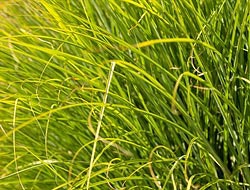

- Home
- Solution Center
- Learn
- Lawn and Landscape
- 8 Perfect Plants for Sidewalk Landscaping Ideas
8 Perfect Plants for Sidewalk Landscaping Ideas
One of the most inhospitable areas of your yard is also the most visible: the sidewalk strip. This droughty, compacted, trampled spot offers a harsh environment — but with the right plants, you can upgrade this wasteland to a pretty paradise. Choose low-maintenance, water-wise plants, and the botanical transformation will save you time (less mowing) and money (less watering required), as well as improve your home's curb appeal.
Discover more details about landscaping the sidewalk strip.
To learn which plants withstand the challenging conditions of the sidewalk strip, keep reading.
Attributes of Successful Sidewalk Strip Plants
Stocking a sidewalk strip planting area requires focusing on carefree plants with a tough constitution. These plants should boast rugged good looks, along with the following traits:
- Drought-tolerant
- Short stature (under 36 inches)
- Low-maintenance (little pruning required)
- Not picky about soil
- Robust and able to stake their claim in the harsh setting
- Perennial (not needing frequent replacement)
Get started on your sidewalk garden by considering a few of these never-say-die plants.

Arkansas Blue Star (Amsonia hubrichtii)
This deer-resistant perennial presents strong three-season interest with blue spring blooms, fine-textured summer foliage, and stunning gold fall color. USDA Zones 4-10.
Size: 2-3 feet tall and wide
Growing tip: After flowering, cut stems back to 6-8 inches to spur well-branched, fuller plants.

Blue Fescue (Festuca ovina var. glauca "Elijah Blue")
This compact ornamental grass forms neat clumps of blue-green foliage. Wheat-colored seedpods appear in summer. USDA Zones: 5-11.
Size: 6-18 inches tall by 6-9 inches wide
Growing tip: This charmer pairs well with purple bloomers and silver foliage. Space tightly to use as a ground cover.

Blue Wild Indigo (Baptisia australis)
Lavender-blue blossom spikes unfurl in late spring to early summer atop bluish-green foliage. Dark seedpods add winter interest. USDA Zones 3-10.
Size: 3-4 feet tall and wide
Growing tip: Plants emerge late in spring. Mark the spot so you don't disturb the crown.

English Lavender (Lavandula angustifolia "Hidcote")
Deep-purple flower wands top silvery gray foliage. Plants are deer- and rabbit-resistant. Both blooms and foliage boast the favored lavender scent. USDA Zones 5-11.
Size: 12-18 inches tall and wide
Growing tip: Use gravel for mulch, especially in regions with humid summers. Lavender prefers a lean, low-fertility soil.

New Zealand Flax (Phormium tenax)
This New Zealand native features eye-catching linear leaves edged or striped in a variety of hues, including pink, purple, red or orange. Look for varieties with bronze or burgundy-purple leaves. USDA Zones 9-11; roots survive in USDA Zones 7-8 in protected locations.
Size: 1-6 feet tall by 1-3 feet wide. Look for dwarf types in regions where plants are hardy.
Growing tip: Different varieties offer varying degrees of winter hardiness. Check with local garden centers to discover what options will survive winter in your region.

Prairie Dropseed (Sporobolus heterolepis)
This native grass forms arching mounds of emerald foliage that burnish gold as autumn ends. Flowers smell like caramel; seedpods open and drop seeds (hence the name). USDA Zones 3-10.
Size: 2-3 feet tall and wide
Growing tip: This grass slowly naturalizes and forms spreading clumps but doesn't self-seed. Birds gobble the seeds, especially juncos and sparrows.

Purple Coneflower (Echinacea purpurea)
Pink petals surround bristly cone centers. Plants self-seed and spread to form a pleasant clump. Look for new varieties with different flower hues, including orange, gold and raspberry. USDA Zones 3-11.
Size: 24-36 inches tall by 18-24 inches wide
Growing tip: In late summer, stop removing spent blooms and allow seed heads to ripen. The seeds attract goldfinches and pine siskins.

Russian Sage (Perovskia atriplicifolia)
Purple blooms float among scented, fernlike, silver leaves from midsummer to fall. The effect in the garden is airy. Plant with purple coneflower or black-eyed Susan for a pleasing combination. USDA Zones 5-11.
Size: 36-60 inches tall by 24-48 inches wide
Growing tip: Clip stems by two-thirds in early spring to encourage well-branched plants.




.jpg)









